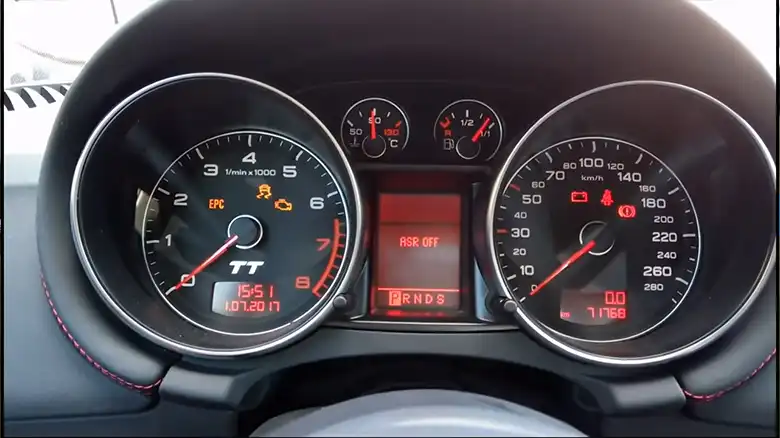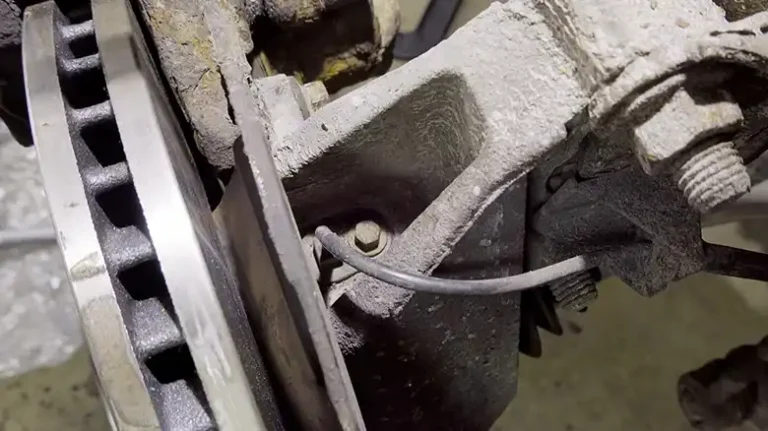How Do I Turn Off ASR? A Quick Guide
As a driver, have you ever found yourself facing a challenging situation on the road? Maybe your vehicle’s Anti-Slip Regulation (ASR) is more of a challenge than a help. In today’s fast-changing driving landscape, I understand how essential it is to understand the details of controlling this essential safety feature.
The good news is, you can regain control. I’ve personally experienced situations where turning off ASR became a solution to specific challenges while driving, such as conquering tough terrains or enjoying spirited driving without the system’s interference.
In this article, I’m here to clarify the step-by-step method of turning off ASR in your vehicle. I’ll provide you with the knowledge to temporarily disable this system, ensuring you’re in control when faced with a challenging driving situation.
Are you interested in learning how to turn off Anti-Slip Regulation? Stay with me to go into the details, offering valuable insights and a step-by-step guide for safe execution. Whether you’re unsure about the process or simply want more control on the road, this article is here to help, drawing from personal experience.

Overview on Anti-Slip Regulation (ASR)
Before we get into the steps, let’s briefly discuss what ASR is and why it’s important to understand it.
ASR is a safety feature that helps prevent wheel spin by regulating engine power or applying the brakes to specific wheels when it detects a loss of traction. It’s especially useful on slippery surfaces such as rain-soaked roads or icy terrain.
There are specific situations where turning off ASR might be beneficial, such as when you need to free your vehicle from deep snow or mud, or when you want to engage in spirited off-road driving or drifting.
Steps to Turn Off Anti-Slip Regulation
Now, let’s get into the nitty-gritty of how to disable ASR in most vehicles. Keep in mind that the exact process may vary from one car make and model to another, so always refer to your owner’s manual for specific instructions.
- Locate the ASR or TCS Button: In many vehicles, there’s a dedicated button on the dashboard or center console that allows you to turn off ASR. Look for labels like “ASR Off” or “TCS Off.”
- Ensure the Engine is Running: Most cars require the engine to be running or in the “On” position for you to make changes to ASR settings.
- Press the ASR Button: Press the ASR or TCS button once. You may see a dashboard indicator confirming that ASR is now off.
- Drive Cautiously: With ASR disabled, it’s crucial to drive carefully, especially in slippery conditions. The system will not intervene to prevent wheel spin, so be mindful of your vehicle’s stability.
- Reactivating ASR: To re-enable ASR, simply press the ASR or TCS button again. You’ll typically see an indicator light on the dashboard indicating that ASR is back on.
When to Turn Off ASR
It’s essential to use caution when turning off ASR, as it can affect your vehicle’s stability and safety. Here are situations where you might consider disabling it:
- Off-Roading: ASR can impede your vehicle’s ability to traverse rough terrain. Turn it off when off-roading for better control.
- Snow or Mud: In situations where you need your wheels to spin to gain traction, like freeing your vehicle from snow or mud, turning off ASR can be beneficial.
- Performance Driving: Enthusiastic drivers might disable ASR when engaging in spirited driving, such as drifting, as it allows for more wheel spin and control.
Benefits and Drawbacks of Turning Off the ASR
ASR, or Traction Control System (TCS), is crucial for vehicle safety. Yet, we’ll discuss when it’s wise to turn it off, examining the benefits and drawbacks to guide your decisions.
Benefits of Turning Off ASR
- Enhanced Traction: One of the primary advantages of disabling ASR is the potential for improved traction in specific situations. When you need to drive on loose surfaces like sand, snow, or mud, turning off ASR can prevent the system from cutting engine power or applying the brakes prematurely, allowing your wheels to spin and gain traction.
- Off-Road Capability: Turning off ASR can be essential for off-road enthusiasts. It enables your vehicle to perform better on rugged terrain, where controlled wheel spin is often required to overcome obstacles.
- Drifting and Performance Driving: ASR can be restrictive when you’re in the mood for spirited driving or drifting. Disabling it allows for controlled wheel spin, giving you more control over your vehicle’s performance.
Drawbacks of Turning Off ASR
- Reduced Safety: The primary drawback of turning off ASR is a potential compromise in safety. ASR is designed to prevent wheel spin and skidding, which are significant contributors to accidents, especially in slippery conditions.
- Increased Risk of Losing Control: Disabling ASR can lead to an increased risk of losing control over your vehicle, especially on wet or icy roads. The system is designed to intervene and stabilize your vehicle when wheel slip is detected.
- Reduced Fuel Efficiency: In some cases, turning off ASR can reduce your vehicle’s fuel efficiency. This is because excessive wheel spin can waste energy and fuel, making your car less economical to drive.
When considering turning off ASR, think of your driving conditions and experience. While it can boost traction and off-road capability, it may compromise safety and fuel efficiency. Prioritize safety when deciding.
Your Questions Answered
1. Can I turn off ASR in all cars?
– ASR can be turned off in most modern vehicles, but the process may vary between makes and models. Consult your owner’s manual for specific instructions.
2. Is it safe to drive with ASR off?
– Driving with ASR off can be safe in certain situations, but it requires careful consideration and skill, especially in slippery conditions.
3. What’s the difference between ASR and ESP?
– ASR and ESP serve different purposes. ASR (Anti-Slip Regulation) primarily focuses on preventing wheel spin, while ESP (Electronic Stability Program) is a broader system that helps maintain overall vehicle stability.
4. Can turning off ASR damage my car?
– Turning off ASR temporarily should not damage your car, but it’s essential to be cautious and reactivate it when no longer needed.
5. When should I keep ASR on?
– ASR should be left on during normal driving conditions, especially in wet or slippery situations, to enhance safety and stability.
6. Is ASR the same as four-wheel drive (4WD)?
– No, ASR is a traction control system, while 4WD refers to a drivetrain that powers all four wheels. They serve different purposes but can complement each other.
7. Can I turn off ASR in automatic and manual transmission cars?
– Yes, you can usually turn off ASR in both automatic and manual transmission vehicles. Refer to your owner’s manual for specific instructions.
8. Does turning off ASR affect fuel efficiency?
– Disabling ASR might lead to reduced fuel efficiency, as it can allow for excessive wheel spin, which can waste energy.
9. Can I turn off ASR while driving?
– It’s recommended to turn off ASR while the vehicle is stationary or moving at very low speeds to ensure safety and control.
10. Why is ASR important for safety?
– ASR helps prevent wheel spin and loss of control in slippery conditions, contributing to safer driving in adverse weather or road conditions.
Bottom Line
Knowing how to turn off Anti-Slip Regulation (ASR) can be valuable in specific driving situations. However, it should be done with caution and only when necessary. Always remember to re-activate ASR once you’re back in regular driving conditions to ensure your safety on the road.

![[Explained] Does ABS Work in Neutral?](https://proautosafety.com/wp-content/uploads/2023/03/Does-ABS-Work-in-Neutral-768x431.webp)

![[Answered] Does Cruise Control Drain Battery?](https://proautosafety.com/wp-content/uploads/2023/03/Does-Cruise-Control-Drain-Battery-768x431.webp)
